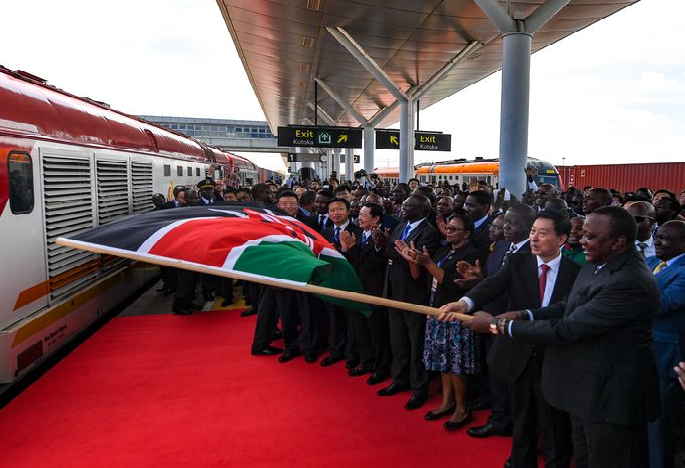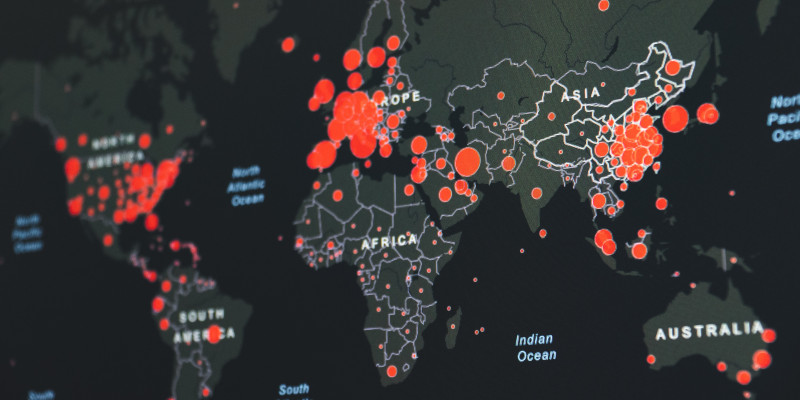Disruption has become the only constant in the rapidly-changing world of business. Every so often, the tide of innovation sweeps with power, buffeting the jobs that did not require or respond to technological interventions in the past. By the time it...
Disruption has become the only constant in the rapidly-changing world of business. Every so often, the tide of innovation sweeps with power, buffeting the jobs that did not require or respond to technological interventions in the past. By the time its power is spent, these jobs, which hitherto appeared unassailable, lie beached like old whales on the sands of the digital economy. The latest to feel the heat of this change has been the road transport sector and the focal point of this pain has been truck and bus owners, drivers, loaders and other related economic segments such as Container Freight Stations (CFSs) which thrived in the days when the port of Mombasa received more cargo than it could evacuate into the hinterlands of Kenya for onward transmission to landlocked countries such as Uganda, Rwanda and the Democratic Republic of Congo.
One freight train, which takes five hours between Mombasa and Nairobi on the Standard Gauge Railway (SGR), has the capacity to gobble up cargo that would ordinarily require 150 trucks to haul over the same distance. That means one trip of the cargo train renders 300 direct jobs redundant since the drivers and loaders of the trucks would be left with time on their hands. It also translates to lost income for the truck owners and that is why they are, naturally, opposed to it. However, they would do well to borrow a leaf from Mohammed Ahmed Abdulle, the secretary-general of the East Africa Petroleum Transporters Association.He says that since the SGR cannot deliver goods and people to the last mile, truckers should find a way to collaborate with the railway operator to offer a complementary solution for passengers and the owners of the goods who use the railway.
“People in logistics have to look at how they do logistics,” says Mr Abdulle, CEO of Dakawou Transport Ltd, a fuel and gas transport company. Mr Abdulle compares the SGR to the fuel pipeline, from which transporters draw fuel for onward delivery to the end users through a formula that ensures one fills the gap created by the other. “If they embrace the SGR, they will make more money.” In 2019 alone, the SGR goods trains moved 347,335 tonnes of cargo on average every month. When extrapolated into the future, this has two implications, two of them dire for road transport and one encouraging. The first is that this is the average weight that the train spares the Nairobi-Mombasa highway every month, meaning that everything else being constant, the highway should last much longer, especially now that an American company, Betchel International, has been given the contract to redesign and construct the 525-kilometre highway.
The second implication, which is not clear at first glance, is the environmental dividend arising from moving goods by train. Travel down the Nairobi-Mombasa highway today. Often, the colour of vegetation growing by the sides of the road has turned from a bright green to a dull grey on account of exhaust pipe emissions. This is because, on average, there are 2,400 trucks that carry goods on the stretch at any given count, according to data from Positive Life Kenya, which tracks HIV and Aids infections. Of course, the effects of adulteration of diesel, have also played a part in degrading the environment. According to some studies, rail transport produces at least 80 percent less carbon dioxide compared to road transport. Its carbon monoxide emission is much lower, meaning that the cost on the environment, over the long-term is, much lower.
In more developed economies, such as Europe and Asia, or closer home, Morocco, rail transport is an integral part of both long-distance haulage as well as mass transport. In India, about 8.1 billion passengers used railway transport in 2017 alone while 1.1 billion tonnes of freight were moved across the country. The population of India that year was 1.3 billion people, meaning that railway transport moved the equivalent of six times the national population. This suggests that if road transport were the main mode of moving goods and people across the Asian country, India would have ground to a halt years ago. Yet this is the scenario that continues to give Kenya a perennial transport headache. Consider that the average number of passengers transported by the SGR per day stands at 4,190; and this is just between Nairobi and Mombasa. To transport the same number of passengers by road would require seventy 60-sitter buses daily.
These buses would, of course, have to share the two-lane highway with heavy trucks, personal cars and other public transport vehicles that ply shorter routes. Given this scenario, it is not difficult to understand why bus drivers on that route are prone to accidents. First, there is, on average, a higher number of vehicles using the road. Second, many of these are slow or are driven erratically, and a sizeable number are driven by people who are not familiar with the route. Here is personal example that inspired this commentary. A few days after Christmas in 2018, I was travelling from Oloitoktok to Nairobi when I attempted to overtake two trucks at Emali. I had to slow down on account of a mirage that looked like a speed bump on the highway. The result was that I could not overtake on time and the driver of a public service vehicle approaching from the opposite direction switched on full lights. By then the trucks had accelerated and, naturally, I was caught between a rock and a hard place. I had to drive on the shoulder on the wrong side of the road to avoid a crash.
Statistics gathered by the National Transport and Safety Authority (NTSA) show that in 2019, private vehicles accounted for the highest number of traffic crash fatalities, followed by commercial and public service vehicles. In August of 2019, while riding on the train from Mombasa, I looked out the window at the stretch where I had barely escaped with the skin of my teeth and, lo and behold, traffic had built up as a result of a crash, involving all three classes of vehicles. At the SGR terminal at Syokimau, I requested to be taken to the control room, where I found that every train, and every track is monitored in real time with different colour codes showing the trains in motion, the stationary ones, the passenger type and those carrying goods.
The system is designed in a way it is virtually impossible, save for a situation beyond human control, for two trains to collide. I asked: Why then, is the long-distance train service not linked to commuter trains in Nairobi? The day policy-makers answer this question is the day Nairobi’s traffic nightmare will be resolved. And once we get it right for Nairobi, we can replicate it in any other urban setting. Until this is done, however, cars will continue to make long trains on our roads leading into and out of the Central Business Districts at peak hours. The result, given the way minibuses pollute the air, is that more drivers and passengers will continue to be exposed to air pollution as a result of emissions. A research conducted by the United Nations Environment Programme in Nairobi last year showed that Kariokor, Baba Dogo and Donholm had the highest levels of air pollution in the city.
All the three areas have a high number of public transport vehicles, meaning that the respiratory diseases and other health complications arising from Nairobi are also high in these areas, yet introducing a commuter train would both ease mass transport and improve health outcomes, including a reduction in miscarriages and stunted growth among children. Another study by Galcano Mulaku and L.W. Kariuki of the University of Nairobi found that industries and vehicles are the leading causes of pollution in the city. “The final map, though based on a very simple dispersion model and relatively few sampling points, clearly shows that Total Suspended Particles (TSP) levels in most of the city are above WHO recommended levels, and that most of the city’s eastern residential areas and the city centre are within the ‘hot zone’ with the highest concentrations of TSP, which is consistent with their proximity to the city’s industrial area,” the authors said.
However, these two areas also have the highest concentration of public service vehicles, a leading contributor to the degradation of air quality in the city. TSP is a measure of air quality. Without a doubt, the Jubilee administration made mistakes at the procurement stage of the railway, saddling the public with too high a financial cost of building and maintaining the railway, which is expected to serve the country for the next 100 years. Still, the country needs a sober analysis of the cost and benefits of the SGR, especially if it is extended to Kisumu and connected with other lines such as the old meter-gauge railway line to Nanyuki via Ruiru, Nairobi’s eastlands and areas like Ngong, Rongai, Kitengela and Kikuyu. It is worth noting that the journey by road from London to Manchester, which is about 335 kilometres, takes about four hours, implying that it takes an hour to cover about 84 kilometres. By contrast, the 488-kilometre journey from Nairobi to Mombasa takes on average eight hours, translating to about 61 kilometres per hour.
That is slightly above the speed limit for the city centre. Such a speed is not sustainable for long distance travel and this could be partly to blame for the road crashes whose toll continues to grow despite interventions. The solution lies in finding new ways of moving large numbers of people and high volumes of cargo safely, efficiently and cost-effectively. Over land, revamping railway transport remains the most viable option. However, policy makers need to connect the dots and win public support in the face of the disruption that this will cause.
Original Sourec: Business Daily




